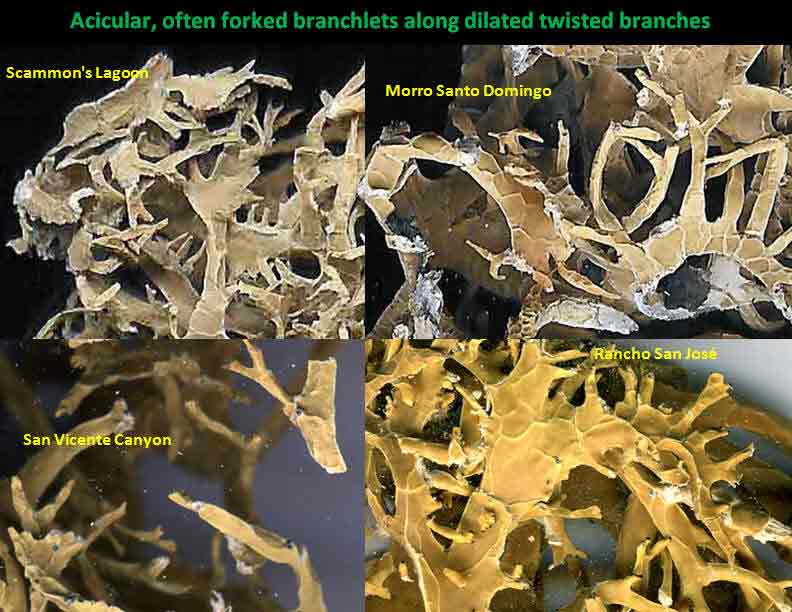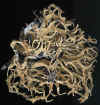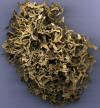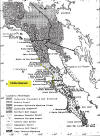|
Niebla limicola
is a species of fruticose lichen endemic to the peninsula of Baja California,
occurring along shores of bays and beaches
with salt scrub (Atriplex, Frankenia), and inland on alkali barren
soil (devoid of higher plant vegetation), ranging from the Vizcaíno Peninsula
north to Bahía de San Quintín. It seems most common on coastal mud or sand
in the Southern Vizcaíno Desert, especially near Guerrero Negro, the type
locality. It is recognized by the regular appearance of short bifurcate
branchlets arising along dilated-flattened segments, and by having salazinic
acid. Less flattened branches, often conspicuously twisted and
contorted—appearing
ribbon-like—are included with the species by also having short bifurcate side branchlets,
in contrast to related salazinic-acid species such as Niebla arenaria
that differs by the straight linear-prismatic branches
more densely and intricately dichotomously divided from base to apex.
Another salazinic acid species, Niebla effusa,
is distinguished by dilated branches near apex bearing simple branchlets
curved much like scorpioid cymose inflorescences of flowering plants.
Niebla brachyura, a
relatively infrequent species in the southern half region of the Vizcaíno Desert and on
Isla Cedros, is sometimes similar in the bifurcate branching but
easily distinguished by its lichen substance of hypoprotocetraric acid instead
of having salazinic acid.
From a "sampling" of eight specimens of putative N. limicola growing within several meters of each other in
the vicinity of the type locality, five were DNA extracted while a sixth was
analyzed only by TLC. The five DNA-extracted clustered
in a phylogenetic ITS tree among other depsidone species within the depsidone clade; however,
both BPP and Stacey analyses recognized two different species as clearly evident
in the 6-loci phylogenetic tree (Spjut et al.
2020, Fig. 7) in which 17130-4751 and 17132-4752 are
well separated, phylogenetically. Although 17130 compares closely with the type
collection in morphology and chemistry of salazinic acid—and could serve as an epitype for
the species in DNA phylogeny studies, the nearby 17132-4752
was found to be a new chemotype for the genus in having the combination of
hypoprotocetraric acid and psoromic acid with unknowns, and also morphologically
distinct by its thicker cortex. It is phylogeographically related to
depsidone specimens collected approximately 430 km further north in the Chaparral Desert
Transition, a disjunct pattern also seen other species complexes of Niebla.
Additional References: See
Niebla
|

















